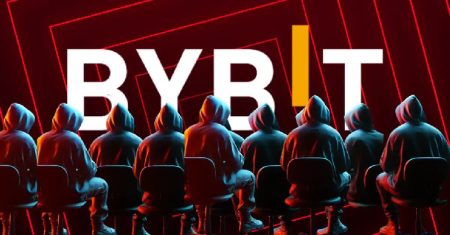Secure Storage Solutions for Large USDT Holdings: Why Tron Might Be the Answer
In today’s fast-paced digital economy, securing large holdings of Tether (USDT) is crucial. Stablecoins like USDT are pivotal in the crypto ecosystem, offering stability and liquidity. However, storing significant amounts requires robust security measures to protect against ever-evolving threats. Justin Sun, the founder of Tron, recommends using a cold multi-signature (multi-sig) approach on Tron’s blockchain for enhanced security and efficiency. This approach is gaining attention due to its potential to mitigate risks associated with centralized storage solutions.
Why Tron? Understanding the Advantage for USDT Storage
When considering platforms for USDT storage, Tron emerges as a viable option, offering a 1:1 recognition with Tether, akin to Ethereum. With over 62 billion USDT issued on Tron, the blockchain stands out for its security, governance, and transparency. Tron’s infrastructure is designed to handle large-scale transactions efficiently, making it an attractive choice for enterprise-grade storage solutions. Its built-in multi-sig functionality eliminates the need for third-party smart contracts, reducing vulnerabilities and enhancing trust.
Local Multi-Signature (Multi-Sig) Security: A Comprehensive Approach
Tron’s multi-sig security is integrated directly into its blockchain, unlike Ethereum, which relies on third-party smart contracts. This setup inherently reduces risks associated with smart contract vulnerabilities, which have been exploited on Ethereum. On Tron, as long as the network is secure, the multi-sig structure remains intact, offering a reliable layer of protection. This Feature ensures that transactions require multiple approvals, adding an extra layer of security against unauthorized access or internal threats.
Transparent Transactions and Enhanced Security: Minimizing Risks
Transparency is paramount in secure transactions. Tron’s multi-sig transactions are fully visible to Ledger hardware wallets, drastically reducing the risk of blind signing, a common issue on Ethereum. Ethereum’s reliance on complex smart contracts can lead to signers unknowingly approving malicious transactions. In contrast, Tron’s clear transaction visibility ensures users have full awareness, enhancing security and reducing the likelihood of unwitting errors or exploits.
Clearer Signatures and Permissions: User-Friendly Security
Using Tron’s multi-sig for USDT transactions offers clarity and control. Ledger devices display detailed information, including token name, amount, sender, and receiver, enabling users to make informed decisions. When permissions are altered, Ledger marks these actions as “unknown type,” helping users differentiate between routine operations and critical security changes. This clear interface reduces confusion and enhances security, ensuring users are aware of changes that could impact transaction security.
Looking to the Future: Tron’s Position in an Evolving Landscape
While Tron currently offers a robust solution, the tech landscape is ever-evolving. Other blockchains may adopt similar security features, and staying informed about emerging solutions is crucial. For now, Tron’s built-in protections and lower risk of smart contract abuse make it a superior choice for enterprise-grade USDT storage. As the crypto ecosystem grows, so too will the solutions available, making ongoing education and adaptation essential for maintaining security.
Conclusion: Tron as a Security-Centric Alternative to Ethereum
In conclusion, Tron’s multi-sig approach provides a security-centric alternative to Ethereum for USDT storage. Its built-in protections and reduced risk of smart contract vulnerabilities make it a compelling choice for enterprises seeking robust solutions. While not investment advice, this exploration underscores Tron’s potential in the realm of secure digital asset management. As the digital economy continues to evolve, platforms like Tron are paving the way for secure, efficient, and transparent transactions, essential for fostering trust and growth in the crypto space.















